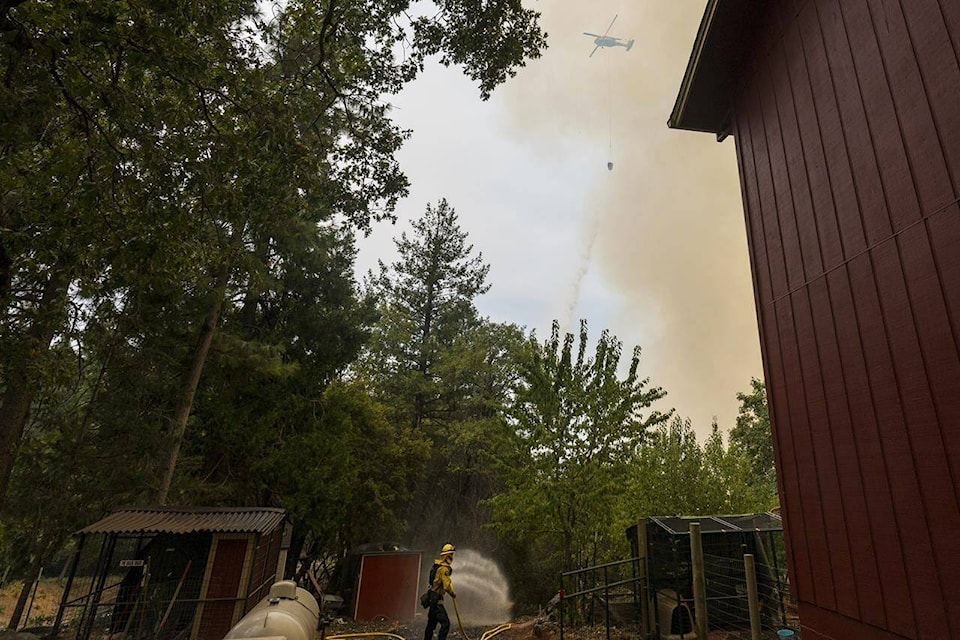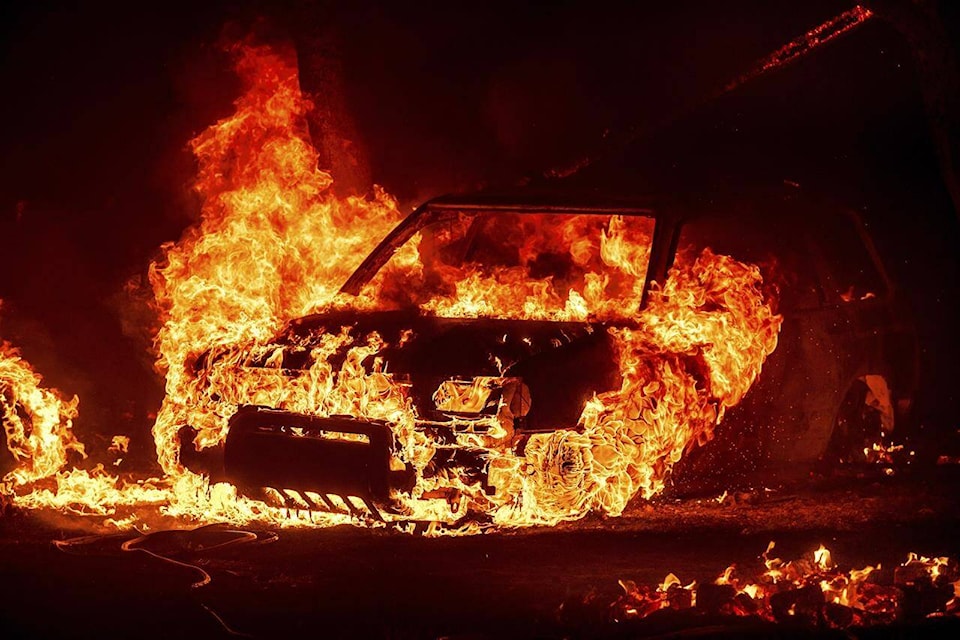Decades of snuffing out fires at the first sign of smoke combined with climate change have laid the groundwork for a massive wildfire in northern California and scores of smaller ones across the western U.S. and Canada, experts say.
These fires are moving faster and are harder to fight than those in the past. The only way to stop future wildfires from becoming so ferocious is to use smaller controlled fires, as Indigenous people did for centuries, experts say. But they acknowledge that change won’t be easy.
Here are some things to know about the latest fires and why they are so savage:
Blazes scorch hundreds of square miles
The Park Fire, the largest blaze so far this year in California, stood at 544 square miles (1,409 square kilometers) as of Saturday. It ignited Wednesday when authorities said a man pushed a burning car into a gully in Chico and then calmly blended in with others fleeing the scene.
Its intensity and dramatic spread led fire officials to make unwelcome comparisons to the monstrous Camp Fire that fire burned out of control in nearby Paradise in 2018, killing 85 people and torching 11,000 homes.
Communities elsewhere in the U.S. West and Canada also were under siege Saturday from fast-moving flames. More than 110 active fires covering 2,800 square miles (7,250 square kilometers) were burning in the U.S. on Friday, according to the National Interagency Fire Center.
Fires are becoming bigger and more threatening
“Amped up” is how Jennifer Marlon, a research scientist at Yale’s School of the Environment, described the recent fires.
Marlon said there aren’t necessarily more wildfires now, but they are larger and more severe because of the warming atmosphere. “The big message is that seeing extreme wildfires is just part of a series of unnatural disasters that we are going to continue seeing because of climate change,” she said.
Ten of California’s 20 largest fires occurred in the last five years, said Benjamin Hatchett, a fire meteorologist with the Cooperative Institute for Research in the Atmosphere with Colorado State University, in Fort Collins.
And he noted that the Park Fire was in eighth place as of Saturday morning, even as it continued to spread. He blamed climate change for creating more variability in weather conditions.
“We have a lot of very, very wet years and very, very dry years,” Hatchett said. “And so we get a lot of this variability that helps to accumulate and then dry out fuels.”
Such is the case this year in California, where record-setting temperatures dried up the plant growth that sprung up during recent wetter-than-average years, Hatchett said.
“So now we really have a really good setup for having these widespread large wildfires,” Hatchett said. “And we’re starting to push the limits of firefighting resource availability.”
These fires don’t even give firefighters a chance to rest at night, said Daniel Swain, a climate scientist with the University of California, Los Angeles and the National Center for Atmospheric Research.
“They’re burning with extreme intensity straight through the overnight and just continuing on into the next day,” he said. “We’re also seeing fires burning over a longer fire season than we used to.”

Forests may have trouble recovering
The fires that are burning today are sometimes so severe and hot that they transform forests into a different type of ecosystem, Swain said.
“The forest is not coming back in the same in the same way as it was in a lot of regions,” Swain said.
Part of the issue is that climate change means that there are hotter conditions as plant life returns. In some cases, trees are replaced with invasive grasses that are themselves flammable.
“So the climate change has altered the context in which these fires are occurring,” he said. “And that’s affecting not only the intensity and the severity of the fires themselves, which it clearly is at this point, but it’s also affecting the ability of ecosystems to recover afterwards.”
Snuffing out fires in the past created problems now
In parts of the country, like the Midwest, farmers use fire to control trees, woody shrubs and invasive species. But not so in the western U.S., where fires have been extinguished in their infancy for decades.
“The problem now is we’ve allowed so much fuel to build up in some of these places that the fires burn very hot and intense. And that tends to do more damage than what nature typically will do with a fire,” said Tim Brown, a research professor at the Desert Research Institute and director of the Western Regional Climate Center in Reno, Nevada.
Fires were once commonplace in the West because of lightning strikes and Indigenous burning, Hatchett said. The practice stopped during colonial settlement, but it now needs to return, Hatchett said.
“That’s the only way we’re really going to get out of this, is to really accept and embrace the use of fire on our terms,” Hatchett said. “Otherwise we’re going to get fire on the fire’s terms, which is like what we’re seeing right now.”
Doing so isn’t easy because there are no longer big-open landscapes where millions of acres can burn unchecked, Swain acknowledged.
“And that’s sort of the conundrum: This is something we need to be doing more of. But the practical reality of doing so is not at all simple,” Swain said.
But he said there is no option to address the wildfire risk that doesn’t involve fire.
“We’re going to see more and more fire on the ground,” he said. “The question is whether we want to see it in the form of more manageable, primarily beneficial prescribed burns, or in these primarily harmful, huge, intense conflagrations that we’re increasingly seeing.”
Heather Hollingsworth, The Associated Press




